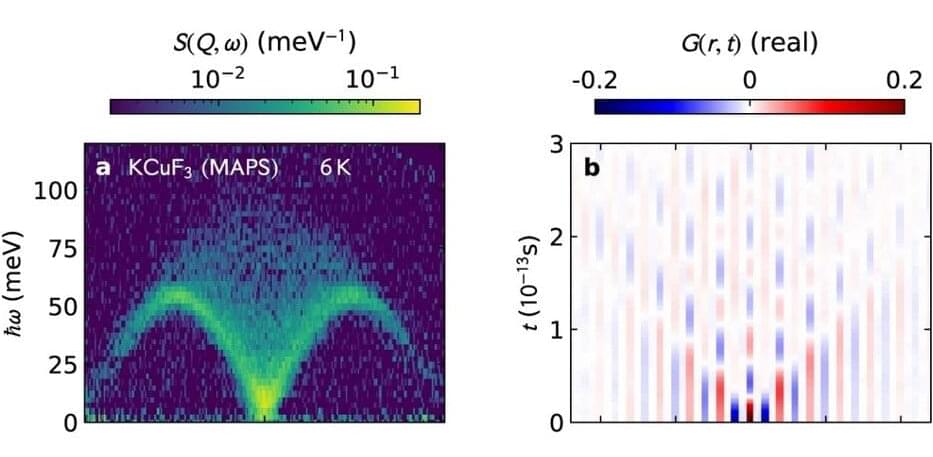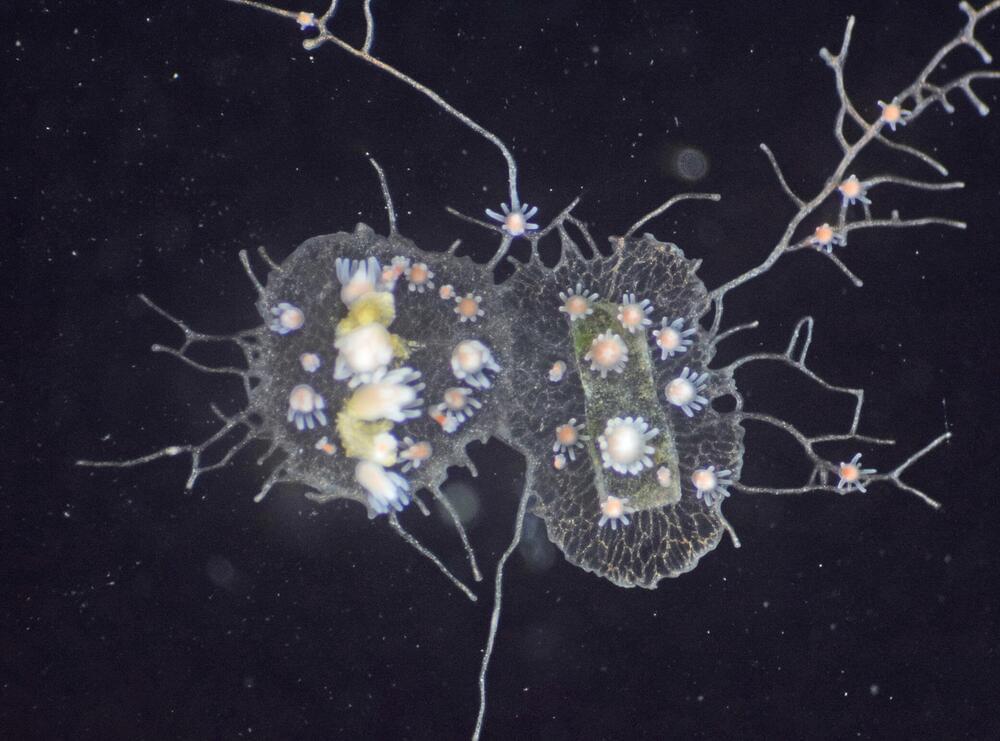
Neutron scattering is considered the method of choice for investigating magnetic structures and excitations in quantum materials. Now, for the first time, the evaluation of measurement data from the 2000s with new methods has provided much deeper insights into a model system—the 1D Heisenberg spin chains. A new toolbox for elucidating future quantum materials has been achieved.
Potassium copper fluoride (KCuF3 ) is considered the simplest model material for realizing the so-called Heisenberg quantum spin chain: The spins interact with their neighbors antiferromagnetically along a single direction (one-dimensional), governed by the laws of quantum physics.
“We carried out the measurements on this simple model material at the ISIS spallation neutron source some time ago when I was a postdoc, and we published our results in 2005, 2013 and again in 2021, comparing to new theories each time they became available,” says Prof. Bella Lake, who heads the HZB-Institute Quantum Phenomena in Novel Materials. Now with new and extended methods, a team led by Prof. Alan Tennant and Dr. Allen Scheie has succeeded in gaining significantly deeper insights into the interactions between the spins and their spatial and temporal evolution.


















